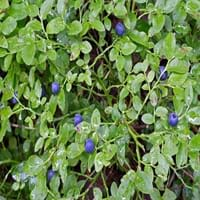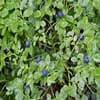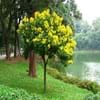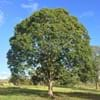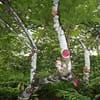Life Span
Perennial
Perennial
Type
Tree
Bulb or Corm or Tuber
Origin
Caribbean, Central America, South America
Mediterranean, Turkey
Types
Alaskan blueberry, Lowbush blueberry, New Jersey blueberry
Not Available
Habitat
Dappled Shade, Sunny Edge, Woodland Garden Canopy
meadows, Terrestrial
USDA Hardiness Zone
10-15
3-9
Sunset Zone
Not Available
21,22
Habit
Oval or Rounded
Clump-Forming
Flower Color
White
White, Blue, Pink, Violet
Flower Color Modifier
Bicolor
Bicolor
Fruit Color
Dark Blue, Black
Not Available
Leaf Color in Spring
Green
Green
Leaf Color in Summer
Green, Dark Green
Light Green
Leaf Color in Fall
Dark Green
Several shades of Green
Leaf Color in Winter
Dark Green
Light Green
Leaf Shape
Pinnate
Long Linear
Plant Season
Spring, Summer, Fall, Winter
Spring, Winter
Sunlight
Full Sun, Partial Sun
Full Sun, Partial Sun
Growth Rate
Medium
Medium
The pH of Soil
Acidic, Neutral
Acidic, Neutral, Alkaline
Soil Drainage
Well drained
Well drained
Bloom Time
Late Spring, Early Summer, Summer, Late Summer, Early Fall
Early Spring, Late Winter
Tolerances
Not Available
Drought
Where to Plant?
Ground
Container, Ground, Pot
How to Plant?
Seedlings, Stem Cutting
From bulbs, Seedlings
Plant Maintenance
Medium
Medium
Watering Requirements
Average Water Needs
Average Water Needs, Do Not over Water, Do not water frequently, Keep the ground moist but not water-logged, Never Over-water
In Summer
Lots of watering
Lots of watering
In Spring
Moderate
Moderate
In Winter
Average Water
Average Water
Soil pH
Acidic, Neutral
Acidic, Neutral, Alkaline
Soil Drainage Capacity
Well drained
Well drained
Sun Exposure
Full Sun, Partial Sun
Full Sun, Partial Sun
Pruning
Prune in early spring, Remove branches, Remove damaged leaves, Remove dead branches, Remove dead leaves, Remove dead or diseased plant parts, Remove deadheads
Remove damaged leaves, Remove dead branches, Remove dead leaves
Fertilizers
All-Purpose Liquid Fertilizer, Ammonia sulphate, In Late summer, Nitrogen, Phosphorous, Potassium, Potassium sulphate
All-Purpose Liquid Fertilizer
Pests and Diseases
Red blotch
Red blotch
Plant Tolerance
Not Available
Drought
Flowers
Insignificant
Showy
Flower Petal Number
Single
Single
Foliage Texture
Medium
Fine
Foliage Sheen
Glossy
Matte
Attracts
Birds
Bees, Flying insects
Aesthetic Uses
Showy Purposes
Beautification, Bouquets, Ground Cover, Showy Purposes
Beauty Benefits
Good for skin and hair, Speed hair growth, Weightloss
Not Available
Environmental Uses
Air purification
Air purification
Medicinal Uses
Astringent, Pectoral
No Medicinal Use
Part of Plant Used
Fruits
Flowers
Other Uses
Used in making tea
Decoration Purposes, Showy Purposes, Used as Ornamental plant
Used As Indoor Plant
Yes
Yes
Used As Outdoor Plant
Yes
Yes
Garden Design
Shade Trees, Tropical
Alpine, Container, Foundation, Lawns and Turf, Mixed Border, Rock Garden / Wall, Wildflower
Botanical Name
SYMPLOCOS martinicensis
CHIONODOXA
Common Name
Blue Berry, Horse Sugar, Martinique Sweetleaf, Whitewood
Chionodoxa, Glory-of-the-Snow
In Hindi
Blue Berry Tree
Chionodoxa
In German
Blue Berry Baum
Chionodoxa
In French
Bleu Berry Tree
Chionodoxa
In Spanish
Árbol de la baya azul
Chionodoxa
In Greek
Μπλε δέντρο μούρων
Chionodoxa
In Portuguese
Árvore Berry Azul
Chionodoxa
In Polish
Niebieski Berry Drzewo
Chionodoxa
In Latin
Berry lignum blue
Chionodoxa
Phylum
Magnoliophyta
Platyhelminthes
Class
Magnoliopsida
Cestoda
Family
Symplocaceae
Liliaceae
Genus
Symplocos
Chionodoxa
Clade
Angiosperms, Asterids, Eudicots
Angiosperms, Monocots
Tribe
Not Available
Not Available
Subfamily
Not Available
Not Available
Difference Between Blue Berry and Chionodoxa
If you are confused whether Blue Berry or Chionodoxa are same, here are some features about those plants to help you choose better. Many people think that these two plants have the same characteristics, but one can see Blue Berry and Chionodoxa Information and learn more about it. Fertilizers required for proper growth of Blue Berry are All-Purpose Liquid Fertilizer, Ammonia sulphate, In Late summer, Nitrogen, Phosphorous, Potassium and Potassium sulphate, whereas for Chionodoxa fertilizers required are All-Purpose Liquid Fertilizer. Hence, one should know the basic difference between Blue Berry and Chionodoxa if you are planning to have them in your garden to enhance its beauty.
<
Flowering PlantsImportance of Blue Berry and Chionodoxa
Want to have the most appropriate plant for your garden? You might want to know the importance of Blue Berry and Chionodoxa. Basically, these two plants vary in many aspects. Compare Blue Berry and Chionodoxa as they differ in many characteristics such as their life, care, benefits, facts, etc. Every gardener must at least have the slightest clue about the plants he wants to plant in his garden. Compare their benefits, which differ in many ways like facts and uses. The medicinal use of Blue Berry is Astringent and Pectoral whereas of Chionodoxa is No Medicinal Use. Blue Berry has beauty benefits as follows: Good for skin and hair, Speed hair growth and Weightloss while Chionodoxa has beauty benefits as follows: Good for skin and hair, Speed hair growth and Weightloss.
Compare Facts of Blue Berry vs Chionodoxa
How to choose the best garden plant for your garden depending upon its facts? Here garden plant comparison will help you to solve this query. Compare the facts of Blue Berry vs Chionodoxa and know which one to choose. As garden plants have benefits and other uses, allergy is also a major drawback of plants for some people. Allergic reactions of Blue Berry are Pollen whereas of Chionodoxa have Skin rash respectively. Having a fruit bearing plant in your garden can be a plus point of your garden. Blue Berry has no showy fruits and Chionodoxa has no showy fruits. Also Blue Berry is not flowering and Chionodoxa is not flowering . You can compare Blue Berry and Chionodoxa facts and facts of other plants too.
